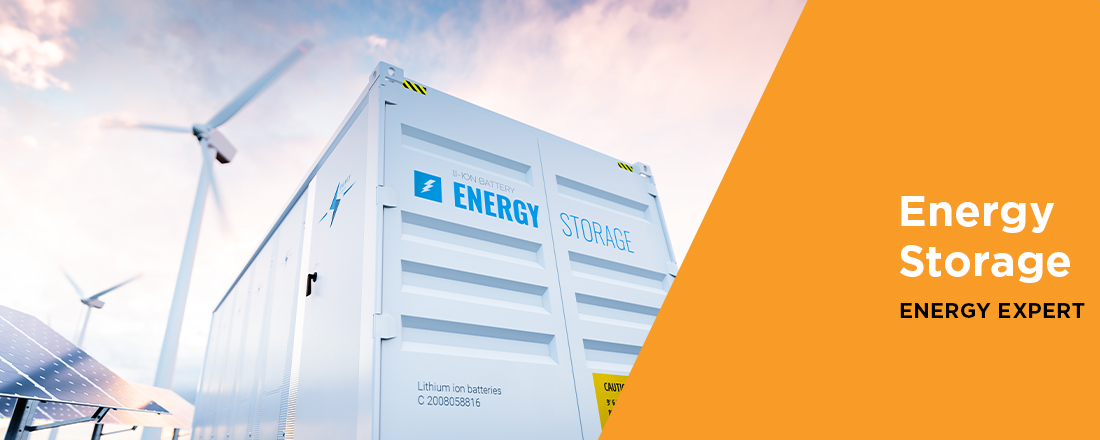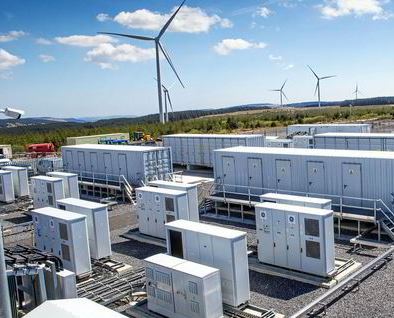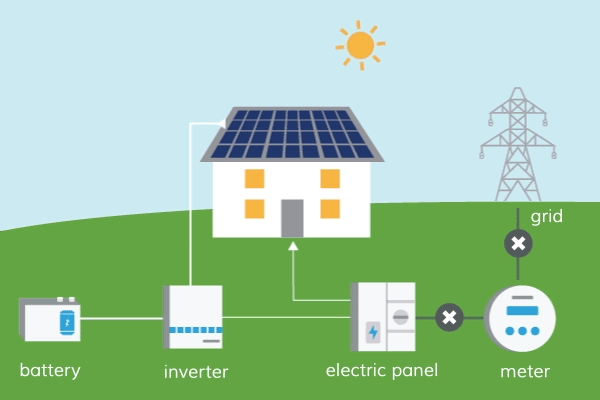MCE’s Energy Expert series takes a deeper dive into more complex energy topics. Explore topics like this, microgrids, and net energy metering in greater detail through our Energy Expert series. Looking for more basics? Check out our Energy 101 series.
What is energy storage?
Energy storage is any technology that allows generated energy to be stored and used later. Most often, the storage is in the form of battery energy storage, such as lithium-ion batteries that are used in electric vehicles, electronic devices, and home battery systems.
Energy storage allows for greater adoption of intermittent renewable energy technologies, such as solar and wind. As the need for a flexible and resilient energy grid increases in California, the role of energy storage has increased significantly. By storing excess energy produced when the sun is shining or the wind is blowing, we can fully utilize these resources during periods of high demand, reducing the need for carbon-intensive natural gas plants. Distributed- and utility-scale energy storage also reduces costs for consumers and utilities. Learn more about the impact of energy storage on California’s grid in our Energy Expert: Duck Curve post.
The effectiveness of energy storage technology is determined by how quickly it can be deployed when there’s a need, how much it can store, and how fast it can be recharged. Batteries have been in use since the early 1800s, but the technology has dramatically improved since then. Pumped-hydro storage has been operating in the United States since the 1920s. As the demand for clean energy and energy independence has increased, so has the need for storage solutions. The extreme weather events caused by climate change also increase the need for energy storage, as customers experience more grid outages and the need for electricity to cool and heat their homes. Energy storage provides a solution for these issues.
What are the different types of energy storage systems?
Energy storage solutions come in a variety of formats ranging from utility-scale to home battery systems. Utility-scale solutions will help address storage and resiliency needs for the entire grid, while personalized solutions for your home or business can help you save money and keep the lights on during outages.
Utility-Scale Solutions
The United States generated 4 billion megawatt-hours of electricity in 2017, but had only 431 megawatt-hours of energy storage available. Pumped-hydro storage accounted for 95% of utility-scale storage, mostly due to the cost-effectiveness of this storage method. However, from 2010 to 2016, the cost of lithium-ion batteries for electric vehicles fell 73%, signaling a dramatic price drop in the cost of lithium-ion as a storage resource.
Depending on the type of storage (pumped hydro, compressed air, molten salt, lithium-ion battery, lead-acid battery, flow battery, hydrogen, and flywheel), the efficiency ranges from 25% to 95%. Lithium-ion and flywheel are the highest efficiency with ratings up to 95%. Not all types of storage are reasonable for utility-scale solutions.
Lithium-ion batteries represent more than 90% of the global grid battery storage market. They have a high-energy density and are lightweight and easy to implement in various settings. By pairing lithium-ion batteries with solar panels, it’s possible to create a completely self-sustaining, 100% clean electricity system that can run indefinitely. This ideal solution works both for utility- and customer-scale energy storage.
Customer-Scale Solutions
Lithium-ion solar plus storage solutions are the most common and cost-effective ways to access energy storage at home. These systems offer a reliable source of backup power during an outage. Unlike gas generators, batteries don’t require fuel, which can be hard to find during outages and can’t be stored for long periods of time. They can also help you save money during regular grid operation. Excess solar produced during the day can be stored and then discharged at night to offset any usage you’d normally pull from the grid. These batteries can also be used without solar, to help pull renewable energy from the grid during the day and use it later in the evening.
Although these systems can be costly to install, MCE’s Energy Storage Program offers support through vetted contractors and funding to help you access storage at home. Learn more about the benefits of home energy storage in the following posts: Top 4 Reasons to Invest in Solar Energy Storage and Top 5 Things to Consider When Installing Home Energy Storage.
How is MCE exploring energy storage?
Lithium-ion solar plus storage solutions are currently the most cost-effective options. In early 2020, MCE implemented a new policy that all solar projects built on behalf of our customers must include energy storage. This policy helps meet MCE’s reliability and greenhouse gas goals while reducing costs for customers. In addition, MCE’s Energy Storage Program provides customers with support for installing this storage solution at their homes or businesses.
MCE is pursuing power-to-transportation applications for green hydrogen. These applications are attractive because of financial incentives and because transportation accounts for the largest portion of greenhouse gases emitted in California. Government incentives and programs like the low carbon fuel standard (LCFS) credits make power-to-transportation applications the most financially feasible pathway for commercializing green hydrogen. As MCE pursues this option, we will also continue to explore financially feasible options for power-to-power solutions. Learn more in our Energy Expert: Green Hydrogen post.
For more information
By working with our customers, MCE can achieve a carbon-free future while creating more resilient communities. For more information about our programs, visit our programs webpage and don’t forget to check out the latest in our Energy Expert series.








